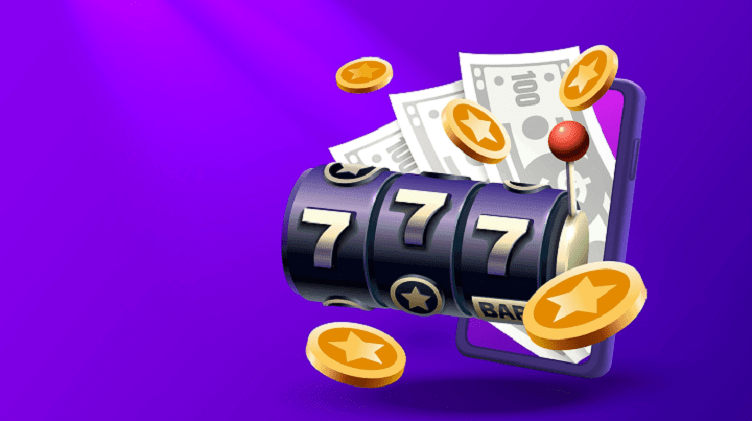RTP: Its Significance Expanding Knowledge
RTP is just a statistic that shows over time how much of the money wagered on a game is returned back to players. A game with an RTP of 96% for instance would let players expect to win back 96% of the money they gamble on over a long run. RTP is computed over millions of spins, hence individual results in the near term might be quite erratic.
The game creator sets the RTP, which is then computed by the fundamental algorithms controlling game behavior. Regarding real-money games, this percentage is crucial as, under normal conditions and providing players play for long enough, it helps them to estimate the possible payouts. For many, especially when spending real money, a better RTP suggests a more enjoyable game.
The Key Variations: Free Play Vs Real-Money Slots
First look would suggest that the mechanics of real-money games and free play would be the same. Players spin the reels, view the animations, and notice symbols aligning up after all. These two approaches have certain significant differences, though, which might influence the RTP.
Players in a free play game—also known as demo mode—are not wagering actual money. Rather, they are utilizing virtual credits—which have no monetary worth. Online casinos and game creators sometimes offer these games to help users test out a game free from financial risk. Conversely, real-money games demand players to gamble actual money and deposit actual coins in hopes of earning real benefits.
One issue that calls careful thought of the principles behind these games is if the RTP varies in free play versus real-money environments. Although free play versions can employ the same RTP algorithm but are not as closely watched or regulated, the RTP stated for a game is typically based on long-term averages from real-money play. To guarantee fairness and consistency, however, most of the time game creators try to keep the same RTP percentages in both modes.
Why RTP Might Appear Different In Real Money Slots Vs Free Play?
Player expectations are one reason RTP would seem to vary in free play compared to real-money slots. Engagement and risk are higher when gamers interact with actual money. This can cause stronger emotions and more close examination of the result. Though the RTP stays the same, a player may feel as though their RTP is decreased when they do not get appreciable profits after making several wagers.
Here also is a part played by volatility. While players might not be able to experience the whole spectrum of outcomes that can happen in real-money play, free play games can be experienced within a brief period. Since RTP is a long-term computation, a player may not hit enough variants in the game to match the theoretical RTP if they merely play a few spins in a free play mode. In real-money environments, on the other hand, gamers are more likely to play for longer stretches of time, therefore influencing the RTP’s theoretical value reflection.
Real-money https://somewhereintimereno.com/ also usually have more sophisticated bonus features, progressive jackpots, and extra game mechanisms meant to change the payout structure. Although the underlying RTP might stay the same, in a real-money situation these extra characteristics are more likely to be used, thereby altering the experience. Particularly if they lead to bigger winnings or losses, these bonuses and features could affect RTP’s impression.
RTP Consistency: Game Developers
Aiming to maintain this consistency, game creators are acutely aware of the relevance of RTP in both free play and real-money slots. The fact is that changing RTP between free play and real-money modes will probably damage the game’s and the casino platform’s image. Transparency and fairness are expected from players; thus, if RTP were distorted in one direction, questions regarding the integrity of the game could surface.
Usually, for both free play and real-money slots, developers apply the same mathematical equations. Given the identical game mechanics, the RTP in both scenarios is computed; so, theoretically, there should not be any significant variation. Usually, short-term variance causes any variation in RTP; it is not a conscious change for one kind of play.
Random Number Generators (RNG)’s Function
Random number generators (RNGs) drive both free play and real-money slots to decide the result of every spin. Ensuring that the game’s results are fair, random, and objective depends critically on RNGs. They are employed in both free play and real-money ways and help decide which symbols land on the reels following each spin.
Maintaining the RTP consistency between these two modes depends critically on RNGs. The RTP should stay the same in both kinds of gameplay theoretically as RNGs are objective and random. The main distinction, though, is that players are more sensitive to their victories and losses and the stakes seem higher when playing real money. Sometimes this increased awareness results in the belief that RTP is different or lower in real-money play, even if the fundamental mechanics are the same.
Player Conduct And RTP
The way the player behaves could also affect RTP impressions. Players in free play mode can have a more laid-back attitude, spending time to test out the game mechanics, study the features, and investigate several tactics. Since they are not wagering real money, the result of each spin may appear less important; however, players are frequently more ready to take losses without feeling frustrated.
When playing with actual money, on the other hand, participants are emotionally connected to the result. Every victory or loss feels more significant, hence when the RTP seems to deviate from expectations, one may experience more loss. Therefore, the player’s attitude shapes his view of RTP; it is crucial to understand that the RTP percentage is a theoretical long-term average rather than a short-term prediction

